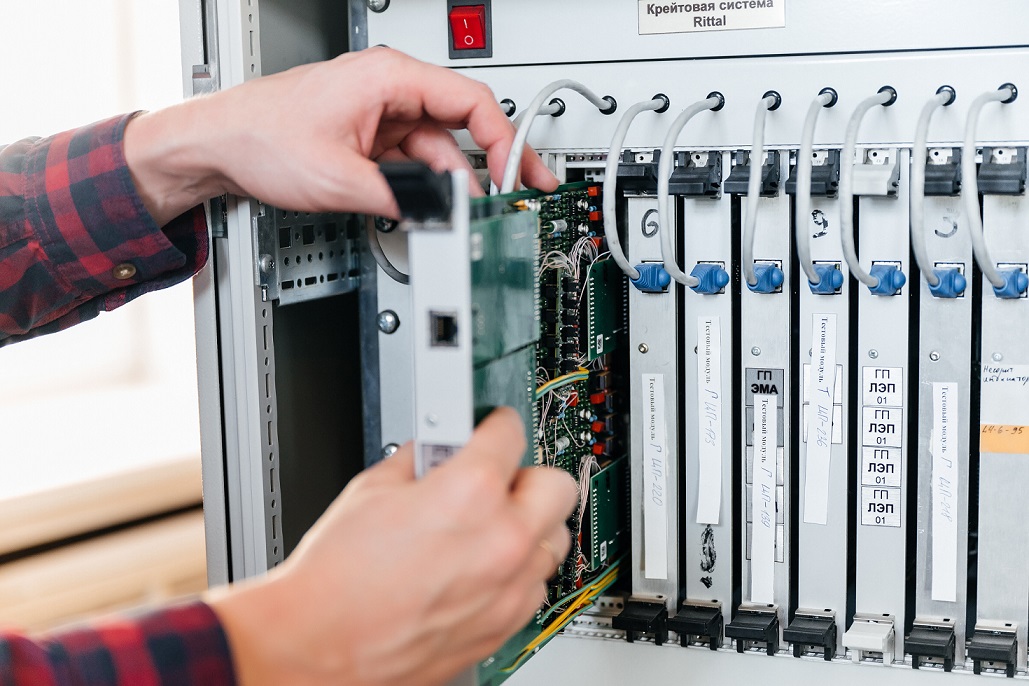Scientists of
Tomsk Polytechnic University are conducting research on electromechanical transients in type-III and type-IV wind power plants, as well as their impact on the inertia of an energy system in general and algorithms of virtual inertia. The TPU scientists are intending to develop a methodology for adjusting automation devices to prevent emergencies taking into account the impact of renewable sources of energy on inertia change in the energy system. The research is supported by a grant from the President of the Russian Federation.
Conventional energy systems possess experience in proven power system protection, which allows controlling emergencies and responding to them on time. Electrical equipment (gas-turbine units, renewable energy systems) equipped in the modern energy systems significantly changes their dynamic properties, i.e. increases the speed of the process due to inertia reduction.
“The next types of wind power plants introduced in Europe and the USA in large scale make a less contribution to the total inertia of the energy system as they connect to the energy system via voltage converters. Over 50% of the German energy system is based on renewable sources of energy, while over 80% is in Denmark.
“The next types of wind power plants introduced in Europe and the USA in large scale make a less contribution to the total inertia of the energy system as they connect to the energy system via voltage converters. Over 50% of the German energy system is based on renewable sources of energy, while over 80% is in Denmark.
Although, wide-area stability control systems in such plants can be insensitive to rapid changes,” says Igor Razzhivin, Associate Professor of the TPU Division of Power and Electrical Engineering.
The TPU scientists conducted a series of experiments using a teaching model similar to the energy system of Tomsk Oblast. They simulated emergencies (short circuit, load shedding and so on) ranging the introduction level of capacity of the wind power plants. The experiments showed that after the introduction of the wind power plants in the energy systems, inertia could be decreased up to 50% depending on the introduced capacity.
“A popular method of risk calculation and estimation is mathematical modeling. There is a fundamental problem affecting the fidelity of process reproduction. Therefore, we used a TPU development in the research work, a multiprocessor hardware and software system entitled All-mode Real-time Simulation Facility of an Electric Power System. The construction principles of the model of the energy system which are laid down in the TPU development guarantee the fidelity of solution,” the scientist explains.
The scientists also conducted a series of experiments with the algorithm of virtual inertia, which overseas colleagues consider as a probable solution to decreasing inertia problems. The core of the algorithm lays in the synthetic maintenance of inertia due to an additional control system of voltage converters. The research showed that in case of a change of the capacity level and adjustment coefficients, the algorithm can show a negative effect.
“It is a relevant problem for Russia, as renewable sources of energy are gradually being introduced in the united energy system. Wind and solar power plants are currently being introduced in the southern part of Russia. There are plans to introduce plants of total capacity up to 1 GW (this capacity is equal to four state district power plant No. 2 in Tomsk).
“It is a relevant problem for Russia, as renewable sources of energy are gradually being introduced in the united energy system. Wind and solar power plants are currently being introduced in the southern part of Russia. There are plans to introduce plants of total capacity up to 1 GW (this capacity is equal to four state district power plant No. 2 in Tomsk).
The process of plant connection to the energy system is complicated and requires detailed prior research. Such problems related to inertia changes in the energy system and the problems of inertia changes are not solved in the Russian energy industry yet,” Igor Razzhivin explains.
The TPU scientists are intending to create a universal specialized accelerated processing unit, which will simulate and reproduce type-III and type-IV wind power plants and a solar power plant. Based on this model and the TPU simulating energy complex, the scientists will create a large energy system. Its advantage will become a hybrid approach: digital, analogue and physical simulation. Due to it, it will be possible to minimize an error and in more detail study the impact of renewable sources of energy on the energy system in general.
The research work is being conducted within the grant of the President of the Russian Federation and will last for two years. The staff of the TPU the Division of Power and Electrical Engineering: Associate Professor Igor Razzhivin and two postgraduates Vladimir Rudnik and Anton Kievets are conducting the research work.
